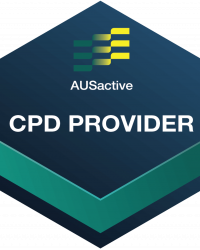Reformer Repertoire
Abdominal Work:
Beats
Alternate Names
N/A
Derived From
Mat Pilates: Double Leg Stretch
Primary Element
Strength
Why for Primary?
To develop strength in thoracic flexion and shoulder extension and strengthen as well as develop control in the deep abdominal muscles transversus abdominis to create pelvis and torso stability whilst in external rotation.
Secondary Element
Stability
Why for Secondary?
To develop control in the deep abdominal muscles transversus abdominis and challenge pelvis and torso stability by adding dynamic movement to the extended leg whilst in external rotation.
Tertiary Element
N/A
Why Tertiary?
N/A
Repetitions
8-10
Apparatus Setup
Suggested springs
- Number system: 1 spring
- Colour system: 1 x red spring
- Resistance: light to medium
Headrest position flat unless any neck issues or the client feels more supported with the head lifted using the headrest or a slightly deflated Pilates ball or cushion.
Foot Bar one position down from vertical, or on many Reformers the top angled position.
Plane of Motion
Sagittal
Targeted Muscles
For torso flexion the targeted muscles are rectus abdominis or the ‘six-pack’ muscles at the front of the torso to overcome gravity and curl the torso forwards and upwards. When the torso is lowering back down the torso extensor muscles Erector Spinae are likely activated, but the abdominals are still working eccentrically against gravity to lower with control.
To create pelvis stability the targeted muscles are the deep abdominal muscles transversus abdominis.
The hip flexor muscles and quadriceps are working to reach the extended legs away, with gluteals working to create the external rotation.
The leg abductors and adductors are also working as the legs open and close.
Warnings
This exercise may be unsuitable for clients where torso flexion or engagement of the abdominals is contraindicated, or where external rotation is contraindicated or would cause pain.
The exercise may be difficult for clients who present with tight hip flexors, or lumbar pain due to the legs being lifted at a 90 degree angle. Try and round the lumbar spine and relax into the carriage and bring the knees in towards the chest.
Execution
Lie supine on the carriage with the legs in an external tabletop position (hips and knees at a 90-degree angle, externally rotated). Place the hands in the short loops with the arms vertical – above the shoulders, maintaining slight tension on the straps.
Exhale lift the head and chest while pressing the arms down beside the body, and extending the legs to a wide V-position. Maintain the chest lift throughout, and externally rotate the legs, beat the heels together. The heels can beat together for a round of three, then four then five with a break in between each round. Alternatively holding the chest lift and beating the heels for 8-10 repetitions.
Observations
Do a body scan of the client taking note of the following points
- Head and Neck
- Is the back of the neck long and crease-free? A slight retraction of the neck with the chin tucked can help avoid straining the neck
- Pelvis
- Are the hip bones even horizontally or is the client leaning to one side?
- Is the pelvis neutral when the legs extend or is the client arching their spine to achieve the leg extension
- Legs
- Is the table top leg at a 90-degree angle and not reaching away causing an arch in the lumbar spine?
- Are the legs externally rotated to a 45-degree angle?
- Apparatus
- Is there tension on the springs the whole time? Or is the carriage crashing to the stopper or ‘park’ indicating a lack of control and a push by the client beyond their ideal range of motion? If the carriage is crashing encourage the client to reduce their range of motion and slow their movement down to focus on controlling the return phase, keeping tension on the ropes and stopping when the arms come back above the shoulders.
Learning Style Technique Cues
Auditory – word associations that connect mind and body
- Press the arms straight down beside the hips, extending the legs straight out to a high V position
- Say the client’s name when you’re about to interact with them
Visual
- Imagine the hands holding the foot bar as the legs extend, keeping the torso stable as the legs extend
- Imagine the upper body and arms working like a see-saw – alternatively lifting and lowering as one unit
- You may demonstrate a part of the movement as a visual representation for the client to see
Kinaesthetic
- Feel the inner thighs create the movement of bringing the legs back together, and the outer thighs drawing the legs apart
Modifications and Variations
Regress the exercise by
- Supporting the upper body with a foam wedge or cushion, keeping the head down while working through the arms press movement and extending the legs one at a time
- Reducing the repetitions and/or pace
- Working on Abdominal Work: Nutcracker
Progress the exercise by
- Increasing the spring setting to one red and one blue spring, adding pace and repetitions
- Working towards: Abdominal Work: The Hundred – Double Leg Stretch to create abdominal endurance
Series and Transitions
This exercise is part of the Abdominal Work series which includes a range of other exercises in the fundamental and progressive repertoire. The Abdominal Work series can also be found in the Mat Work and Cadillac repertoire.
Transition to Abdominal Work: The Hundred – Double Leg Stretch by returning to a supine position with the arms lifted above the shoulders, legs in a table top position.
The traditional order of the Abdominal Work series is
- Single Leg Stretch
- Double Leg Stretch
- Hamstring Pull or Single Straight Leg Stretch (you can find this in the Mat Work repertoire)
- Double Leg Lower (not included in the Inspired Academy repertoire, however a similar exercise can be found in the Feet in Straps: Double Leg Lowers)
- Criss Cross
Inspired Academy follows the order to create stability and mobility before building strength.
Warm Up repertoire
Fundamental repertoire
Progressive repertoire

